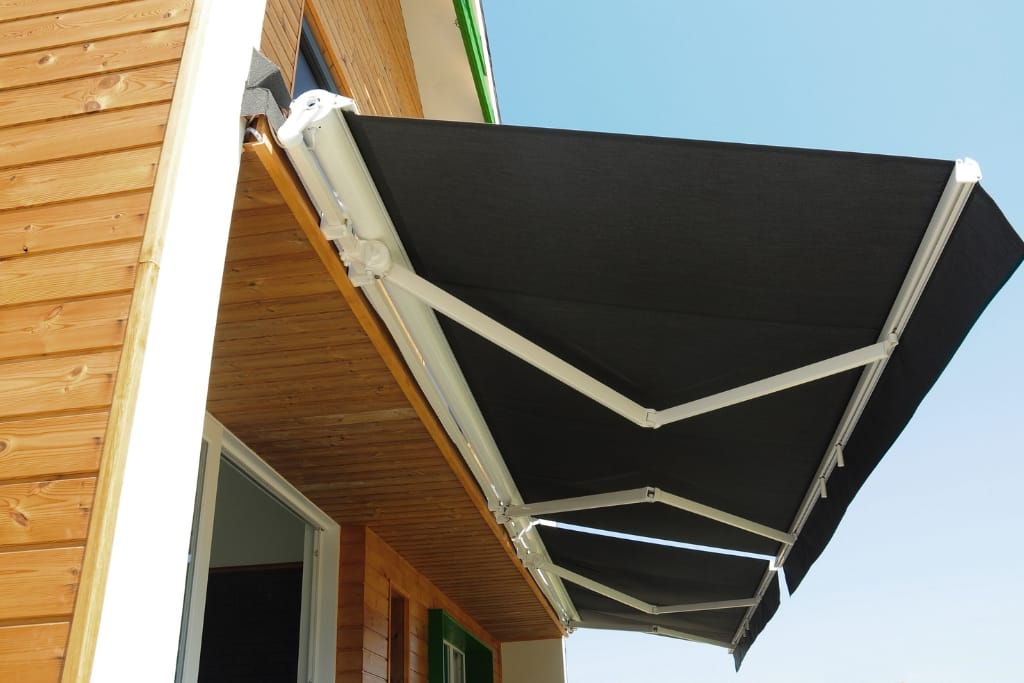A retractable awning is a perfect addition to any outdoor living space, providing shade on demand and enhancing the aesthetic appeal of your home.
Proper maintenance is essential to ensure its longevity and optimal performance.
By keeping your awning in good condition, you can extend its lifespan and enjoy countless relaxing days beneath its comfortable cover.
Are you ready to discover the best ways to maintain your newly installed retractable awning?
Let's explore eight crucial tips to keep your awning looking immaculate and functioning at its best.
1)) Regular Cleaning Of Fabric And Components
Regular cleaning of the fabric and components of your retractable awning is vital to preserving its appearance and functionality.
Start by gently sweeping or brushing off leaves, dirt, or debris from the awning fabric.
Use a mixture of mild soap and water to wash the fabric, apply it with a soft brush or sponge, and ensure you rinse it thoroughly to remove any soap residue.
Pay keen attention to the frame and moving parts, as these can accumulate dust and grime over time.
Regular lubrication of the moving components will prevent rust and ensure smooth operation.
By making cleaning a routine task, you'll not only maintain the awning's good looks but also significantly extend its service life.
2)) Inspecting For Damage And Wear
To ensure your retractable awning continues to perform optimally, regular inspections for damage and wear are essential.
Start by visually examining the fabric for tears, holes, or fraying edges that may compromise its integrity.
Next, check the frame for any signs of bending, cracking, or corrosion, particularly in joints and connections that bear the most stress.
Don't forget to inspect the moving parts, such as the motor and arms, for any unusual noises or restricted movement that could indicate a mechanical issue.
Addressing these problems early can prevent more significant damage and costly repairs down the line.
By making a habit of inspecting your awning, you'll keep it in top condition and reliable for years to come.
3)) Properly Retracting During Harsh Weather
Retracting your awning during harsh weather conditions is crucial to prevent unnecessary damage and extend its lifespan.
High winds, heavy rain, and snow can place undue stress on the fabric and frame, leading to tears, warping, or even complete structural failure.
To safeguard your awning, it's essential to retract it at the first sign of a storm or whenever the forecast predicts severe weather.
Ensure the awning is securely locked in place once retracted to avoid any unwanted movement caused by gusts of wind.
Establishing a routine of retracting your awning in adverse conditions will protect its integrity, preventing costly repairs and ensuring that it remains ready to use during favorable weather.
4)) Lubricating Moving Parts
The smooth operation of your retractable awning relies heavily on the condition of its moving parts, making regular lubrication a key maintenance task.
Over time, these components can accumulate dust, dirt, and wear, resulting in friction and potential rust, which can hinder seamless movement.
To maintain performance, use a silicone-based lubricant on all moving joints, gears, and tracks, applying it lightly to ensure all parts are coated without leaving excess residue.
Pay special attention to the arms and retraction mechanism to keep them operating smoothly.
Regular lubrication not only ensures that the awning extends and retracts with ease but also contributes to preserving its structural integrity and longevity.
By integrating this step into your maintenance routine, you'll keep your awning functioning efficiently and avoid unexpected mechanical failures.
5)) Checking And Tightening Mounting Points
Ensuring the stability and security of your retractable awning involves routine checks and tightening of its mounting points.
Over time, vibrations, strong winds, and constant use can cause the bolts and brackets securing your awning to loosen, potentially compromising its structural integrity.
Begin by examining each mounting point for signs of loosening or wear, focusing on both the wall brackets and support arms.
Use the appropriate tools to re-tighten any loose bolts, ensuring they are firmly secured without overtightening, which could damage the frame or wall.
Inspect for any corrosion or rust around the fastening areas, which might indicate a need for replacement or further maintenance.
By regularly checking and fortifying these critical connections, you’ll not only affirm the safe use of your awning but also preserve its durability and reliability through the years.
6)) Avoiding Excess Weight On The Awning
Preventing excess weight on your retractable awning is essential to avoid undue stress and potential damage to its structure.
Whether from accumulated debris, such as leaves or snow, or by inadvertently hanging heavy decorative items, excess weight can strain the fabric and frame, leading to sagging or even tears.
Regularly clear off any buildup on the awning and avoid using it to support items other than its intended purpose.
During seasonal changes or inclement weather, take extra care to ensure your awning remains free of any heavy loads.
By conscientiously avoiding excess weight, you will ensure the longevity of your awning and maintain its efficiency and functionality throughout its lifespan.
7)) Operating With Appropriate Force
Operating your retractable awning with appropriate force is crucial to maintaining its condition and functionality.
Applying excessive force when opening or closing the awning can strain the mechanism, potentially leading to damage or malfunction.
Operate the awning smoothly and steadily, using any installed controls or guides to ensure you are exerting the right amount of pressure.
If you notice resistance or unusual movement, it's essential to investigate and resolve any underlying issues rather than forcing the mechanism.
By exercising care and attention during operation, you safeguard your awning against unnecessary wear and tear.
This approach not only prolongs the life of the awning but also ensures it continues to operate effectively and safely under regular use.
8)) Scheduling Professional Maintenance Annually
Scheduling professional maintenance annually for your retractable awning is a prudent step toward ensuring its optimal performance and extending its lifespan.
A qualified technician can conduct a comprehensive inspection, identifying and addressing issues that might not be apparent to the untrained eye.
This includes checking the integrity of the fabric, assessing the mechanical components for wear, and confirming that all mounting points are secure.
Technicians can also provide expert advice on any necessary repairs or replacements, ensuring your awning is in peak condition.
Regular professional maintenance not only reassures you of the awning's safety and reliability but also protects your investment by keeping it functional and visually appealing for many years to come.
Conclusion
By taking a proactive approach to maintaining your retractable awning, you ensure both its longevity and reliability.
Implementing regular inspection routines, addressing potential issues such as loose mounting points, and excess weight, and applying the correct operation techniques will optimize its performance and functionality.
Furthermore, the value of professional maintenance cannot be overstated, as it provides peace of mind and expert oversight.
Each step in the maintenance process contributes to a seamlessly operating awning that not only elevates your outdoor spaces but also stands the test of time.
Protect your investment and enjoy the enduring benefits of a well-maintained awning for years to come.
Download Our Free E-book!








